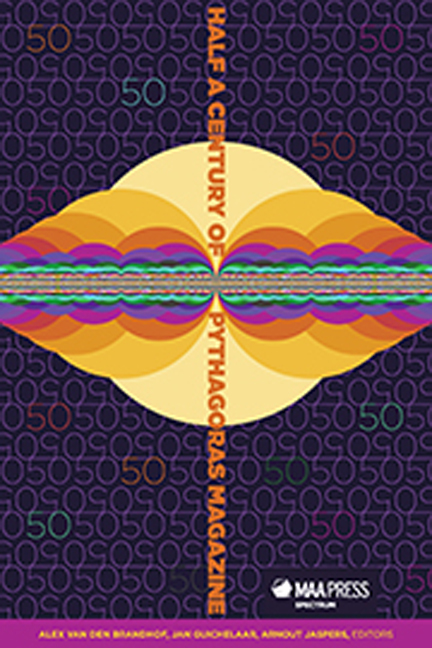6 - Dionigmas
Summary
1. FIVE MATCHES
In the figure five matches of equal length form a triangle. What is the top angle?
2. MINIMAX
During a gym lesson thirty pupils are standing neatly ordered in the shape of a 5 × 6 rectangle. Bernard is the smallest in his row, but taller than the smallest in every other row. Frank is the tallest in his column, but smaller than the tallest of every other column. Who is taller, Frank or Bernard?
3. CUT AND PASTE
Cut both figures in two pieces and rearrange the four pieces to forma square.
4. GOSSIP
Six persons each know a piece of gossip they want to share with the others. They do this by telephone. In each telephone call the two callers exchange all the pieces of gossip they know. How many telephone calls are required at least, so that everybody knows all six?
5. JIGSAW PUZZLE
Nick has a jigsaw puzzle of 35 pieces. Each piece has one of the five forms shown in the figure. How many pieces of each kind are there?
6. STAYING AFTER CLASS
A math teacher lets ten of his pupils stay after class. The pupils are put in a row, one behind the other. The teacher puts a cap on the head of each pupil in the color red, green, or blue. Pupils can see only the colors of the caps in front of them. So nobody knows the color of his own cap. Everybody is allowed to guess the color of his own cap once, starting with the pupil last in the row, then the one before him, etc. If the answer is correct, the pupil may go home. If the answer is incorrect, detention work awaits him before being allowed to go home. Before the teacher puts his pupils in a row and puts on the caps, they get a few minutes to confer. By agreeing on a strategy, they can minimize the amount of detention work. How many pupils can go home without detention work?
7. DIAGONAL
In the square in the figure an oblong rectangle is drawn. The total area of the four gray triangles equals 8 (four 90°-45°-45°-triangles). Calculate the length of the diagonal of the rectangle.
- Type
- Chapter
- Information
- Half a Century of Pythagoras Magazine , pp. 231 - 244Publisher: Mathematical Association of AmericaPrint publication year: 2015

